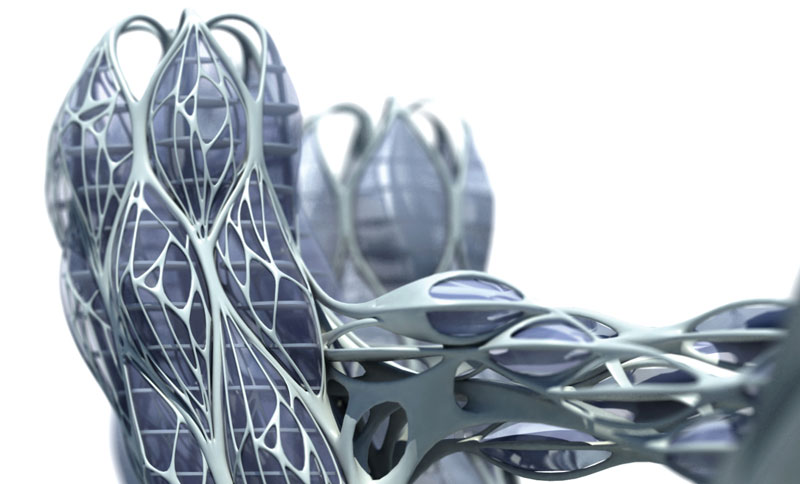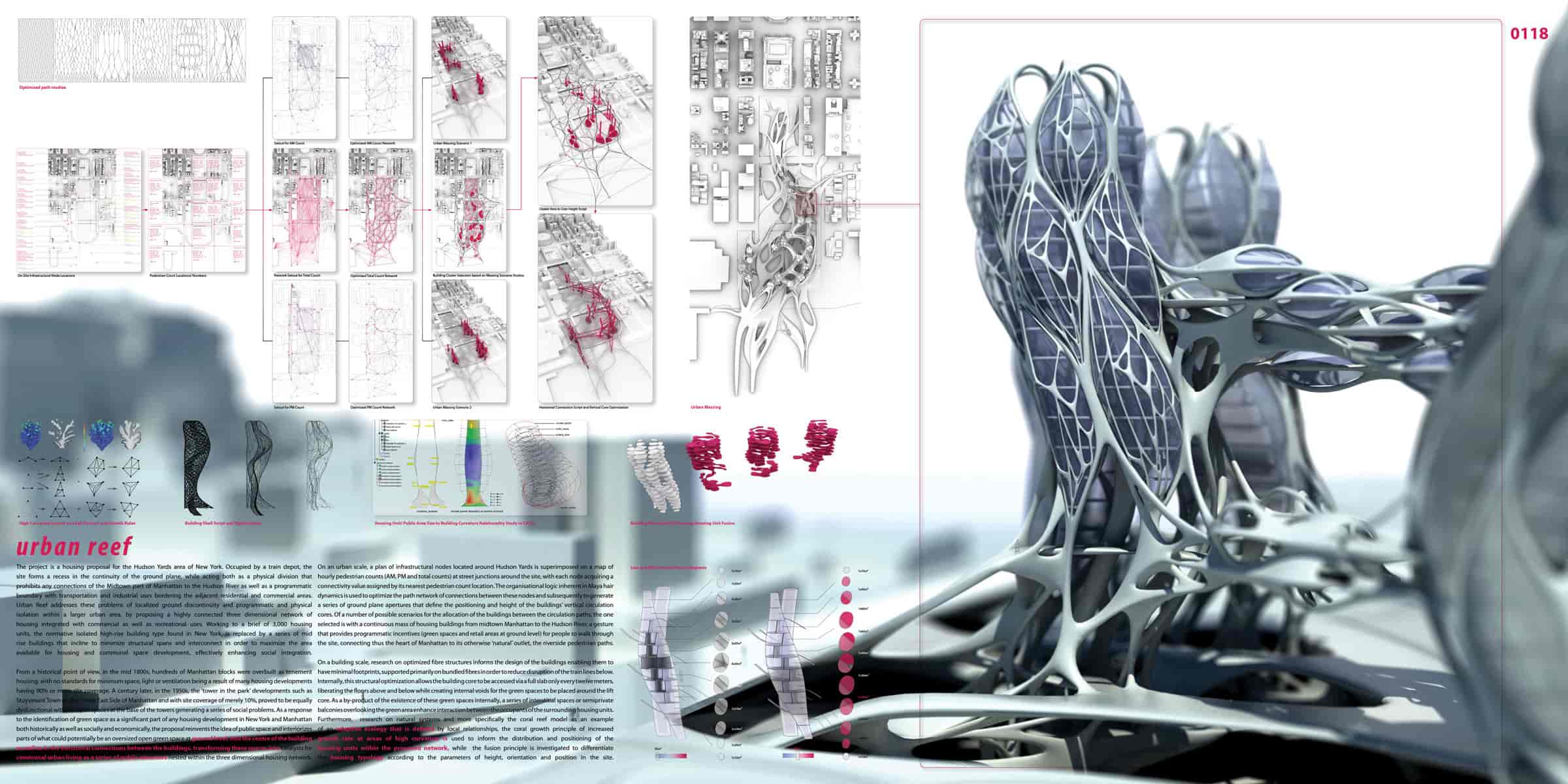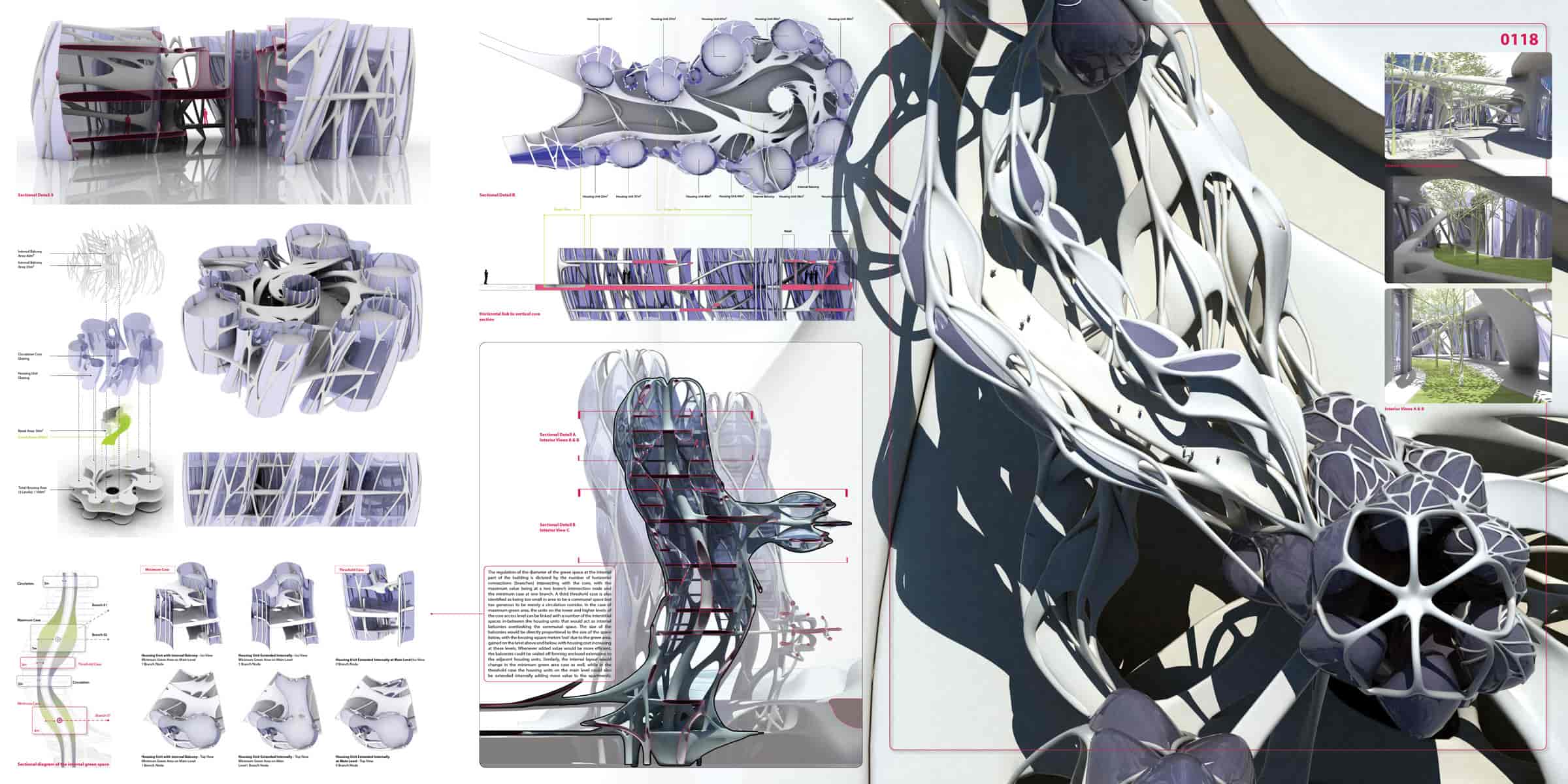Special Mention
2010 Skyscraper Competition
Kostas Grigoriadis, Alex Robles – Palacio, Irene Shamma, Pavlos Fereos
United Kingdom

The project is a housing proposal for the Hudson Yards area of New York, which is currently occupied by a train depot that forms a recess in the continuity of the ground plane at pedestrian level. Acting as a physical division, the depot prohibits any connections of the Midtown part of Manhattan to the Hudson River while also creating a programmatic boundary with transportation and industrial uses bordering the adjacent residential and commercial areas.
Urban Reef addresses these problems of localized ground discontinuity and programmatic and physical isolation within a larger urban area by proposing a highly connected three-dimensional network of housing integrated with commercial as well as recreational uses. Working to a brief of three thousand housing units, the normative isolated high-rise building type found in New York, is replaced by a series of mid rise buildings that incline to minimize structural spans and interconnect in order to maximize the area available for housing and communal space development.
From a historical perspective and in the mid 1800s, hundreds of Manhattan blocks were overbuilt as tenement housing, with the lack of standards for minimum space, light or ventilation being a result of many housing developments having a ninety percent or more site coverage. A century later in the 1950s, the ‘tower in the park’ developments such as Stuyvesant Town on the Lower East Side of Manhattan, with a site coverage of merely ten percent, proved to be equally dysfunctional with the open spaces at the base of the towers generating a series of social problems. As a response to the identification of green space as a significant part of any housing development in Manhattan historically as well as socially and economically, the proposal reinvents the idea of public space and internalizes parts of what could potentially be an oversized open green space at ground level and into the centre of the tower as well as in the horizontal connections between the buildings.
These interior green spaces subsequently become catalysts for communal urban living, by acting as a series of public attractors nested within the three-dimensional housing network.
The onsite urban building deployment is generated parametrically, initially with a plan of infrastructural nodes located around Hudson Yards being superimposed on a map of hourly pedestrian counts at street junctions around the site, with each node acquiring a connectivity value assigned by its nearest pedestrian count location. The organisational logic inherent in Maya hair dynamics is then used to optimize the path network of connections between these nodes subsequently generating a series of ground plane apertures that define the positioning and height of the buildings’ vertical circulation cores. Of a number of possible scenarios for the allocation of the buildings between the circulation paths, the one selected is with a continuous mass of housing buildings from midtown Manhattan to the Hudson River, a gesture that provides programmatic incentives for people to walk through the site, connecting thus the heart of Manhattan to its otherwise ‘natural’ outlet, the riverside pedestrian paths.
On a building scale, research on optimized fibre structures informs the design of the towers enabling them to have minimal footprints, supported primarily on bundled fibres in order to reduce disruption of the train lines below. Internally, this structural optimization allows for the breaking of the floorplate regularity, allowing for the creation of internal voids for green spaces to be placed around the lift cores. As a by-product of the existence of these spaces internally, a series of interstitial spaces or semiprivate balconies overlooking the communal area enhance interaction between the occupants of the surrounding housing units.
Research on natural systems and more specifically the coral reef model as an example of an adaptive ecology that is defined by local relationships, the coral growth principle of increased growth rate at areas of high curvature is used to inform the distribution and positioning of the housing units within the proposed network. Additionally, the coral fusion principle is utilized to differentiate the various housing typologies according to parameters of height, orientation and position in the site.


This work is licensed under a Creative Commons License permitting non-commercial sharing with attribution. https://creativecommons.org/licenses/by-nc-nd/4.0/



